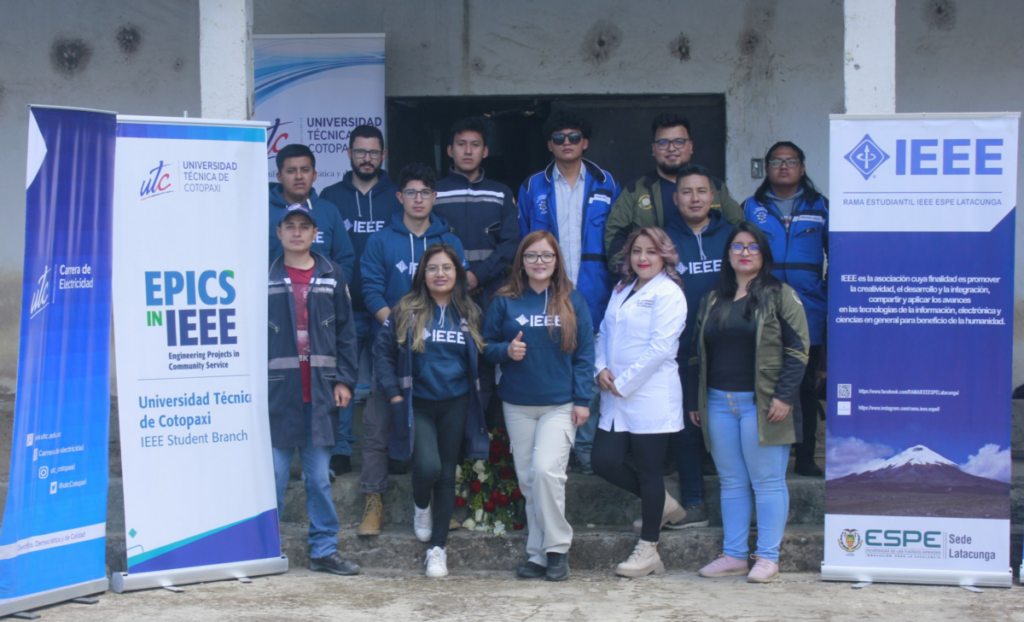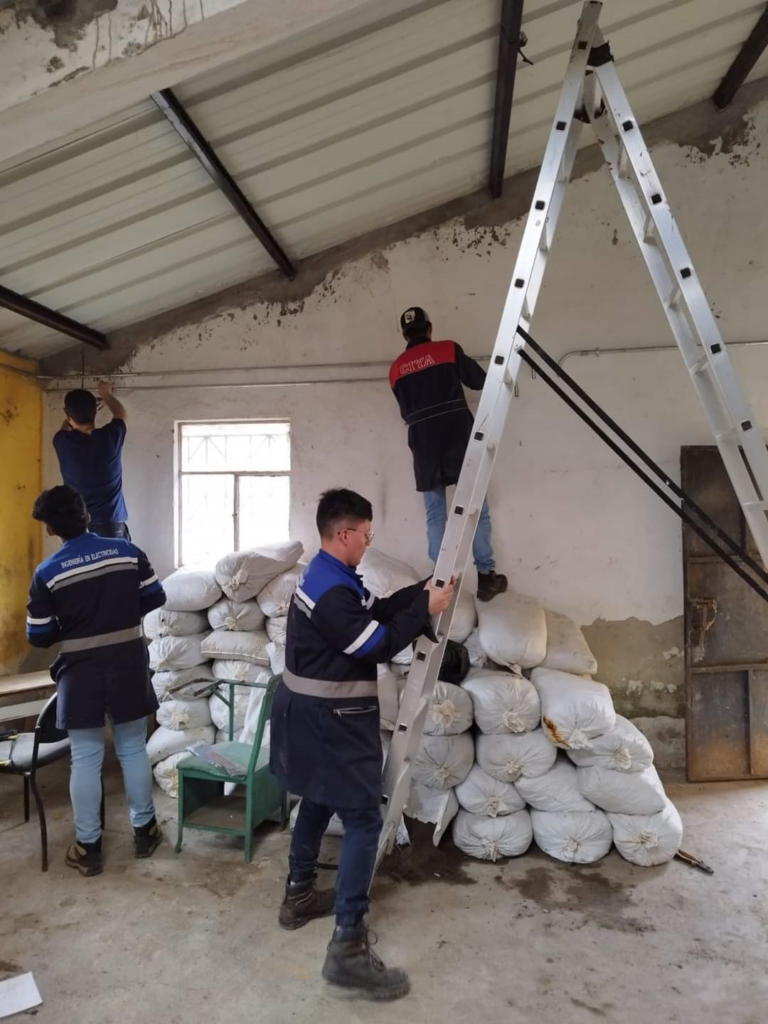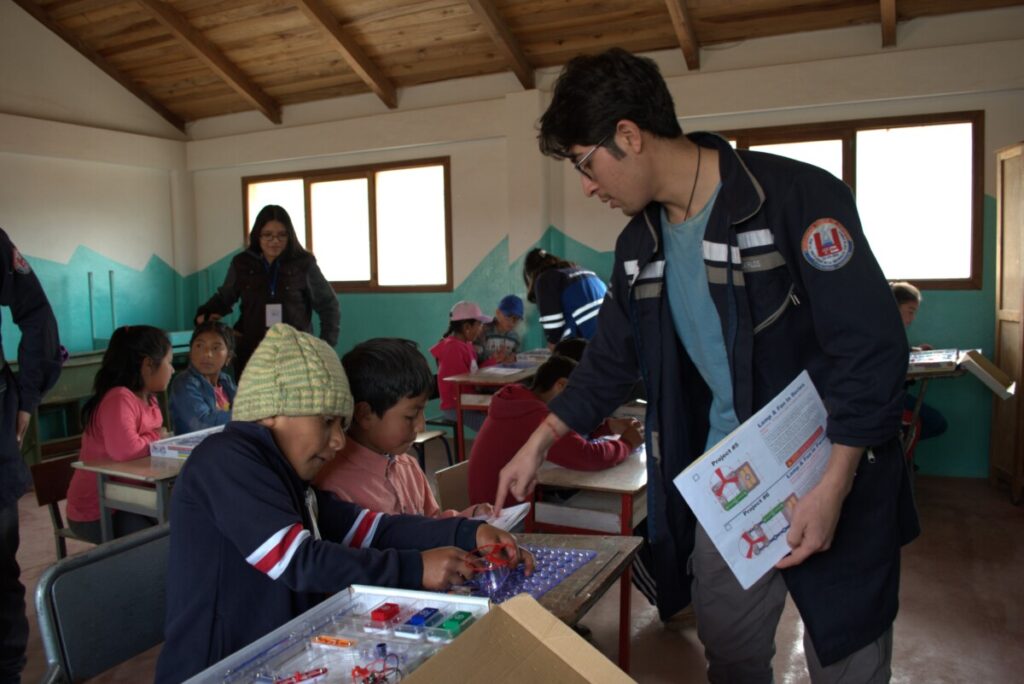Through their EPICS in IEEE-funded effort to develop an automated grain dryer, a team of university students is helping to improve the quality of life for impoverished communities within central Ecuador
 Located within the province of Cotopaxi in central Ecuador, the parishes of Angamarca and Guangaje are among the poorest communities in the country, with 80% of their inhabitants subsisting on less than one dollar a day in income. Though it’s possible to grow beans, barley, maize, wheat, and mellocos (a tuberous root vegetable native to the Andes region) as well as raise cattle and livestock in the area, production of these by farmers has mainly been for self-consumption based on the volatility of local weather conditions and the perishability of the products – a reality which continues to perpetuate a cycle of poverty for area residents.
Located within the province of Cotopaxi in central Ecuador, the parishes of Angamarca and Guangaje are among the poorest communities in the country, with 80% of their inhabitants subsisting on less than one dollar a day in income. Though it’s possible to grow beans, barley, maize, wheat, and mellocos (a tuberous root vegetable native to the Andes region) as well as raise cattle and livestock in the area, production of these by farmers has mainly been for self-consumption based on the volatility of local weather conditions and the perishability of the products – a reality which continues to perpetuate a cycle of poverty for area residents.
It’s an issue that the Technical Chapter of Power and Energy (PES) of the IEEE-UTC Student Branch (STB14005) — supported by a grant from EPICS in IEEE and expertise from local partners — recently sought to address. And thanks to their efforts as part of a project entitled “Automation of the Drying of Andean Grains for the Vulnerable Communities of Angamarca, Cotopaxi,” the team’s design and construction of an efficient grain dryer will ultimately allow farmers to process their harvest before storing or selling it, thereby helping to prevent products from deteriorating due to weather conditions or pests and ensuring farmers of a more stable source of income.
A Sustainable Solution
“We visited different communities and sectors in Ecuador, but we chose these parishes for our project because they’re among the most vulnerable communities in the country,” shared Project Leader Gabriel Napoleon Pesantez Palacios, a student at Universidad Técnica de Cotopaxi (Technical University of Cotopaxi) in Ecuador.
“The creation and installation of a grain dryer will be essential to helping farmers preserve their crops efficiently under optimal conditions and enhancing quality of life for area residents,” agreed Wilian Patricio Guaman Cuenca, the project’s Financial Manager and a student at The Army Polytechnic School (Universidad de las Fuerzas Armadas ESPE — Escuela Politécnica del Ejército) in Sangolquí, Ecuador.
The process of grain drying helps prolong the shelf life of a variety of crops for domestic, agricultural, or industrial use by reducing their water/humidity content and preserving their purity. According to the team, their grain dryer will achieve these goals – and more – thanks to the inclusion of several additional and powerful features designed to enhance their mechanism’s efficacy.
“While other grain dryers on the market have a simple control system (typically with some kind of timer), they don’t have any kind of intelligent control technology that enables their automated operation,” Palacios explained. “By contrast, our use of various design software (such as AutoCAD, SolidWorks, and SketchUp) will allow us to incorporate a programmable logic controller (PLC) that connects our device to a data network and the system’s sensors and fans. This will enable our grain dryer to be more automatic and remotely controlled by a monitoring system if necessary as well as to be adjusted to ensure the dryer’s optimal performance.”
A Teaching Moment
Through the team’s collaboration with local community members, churches, and a rural development organization in the province of Cotopaxi, they were able to arrange for the location of the dryer in an area warehouse and promote awareness and ‘buy-in’ of the initiative among local farmers and residents, while the grant from EPICS in IEEE helped fund the team’s purchase of materials. And though inclement weather in the region delayed some project activities for several weeks in January-February, the team is excited about the progress they’re making towards the design and ultimate installation of their system – as well as for the teaching moment the project represents for local school children.
“As part of our project, we’re visiting local elementary school classrooms 1-2 times per month to teach students about electricity and other basic STEM principles,” Palacios said. “In addition to encouraging them to study engineering as they get older, their ability to understand the impact of this project and the equipment involved will enable them to keep it going.”

As the full team — which also includes university students Nataly Gavilanez (Team Secretary) and Carlos López (Project Publicity) as well as volunteers Alisson Guanocunga and Carlos Dias Christian – prepares to install the equipment they designed this spring and bring it online by this summer, they’re excited for the hope it offers to the impacted communities.
“In addition to helping strengthen the area economy through this project, we’re working to launch other grain-drying and health-related projects that will further improve quality of life in these communities,” Cuenca noted. “But helping local children understand this project’s impact on their community and embrace STEM as a means of enabling social and economic improvement is perhaps our greatest success.”
As for their own lessons learned, Cuenca confirmed that “from planning to execution, this project provides all of our team members with invaluable practical learning experiences that will prepare us for future professional challenges.”
Palacios agreed and expressed gratitude for the opportunities IEEE enables.
“EPICS in IEEE is a great program that helps students think differently, practice in their field, understand social realities, and apply their engineering skills to real-life situations in their local community,” Palacios said.
For More Information
For more information on EPICS in IEEE or the opportunity to participate in service learning projects, visit https://epics.ieee.org/. “EPICS (Engineering Projects in Community Service) in IEEE” is an initiative that provides opportunities for students to work proactively with both engineering professionals, technological innovation, and local organizations/partners to develop solutions that address global community challenges.

Recent Comments